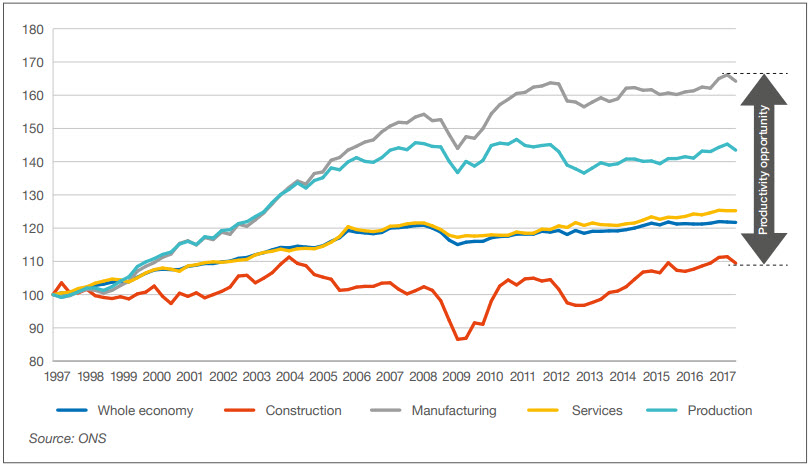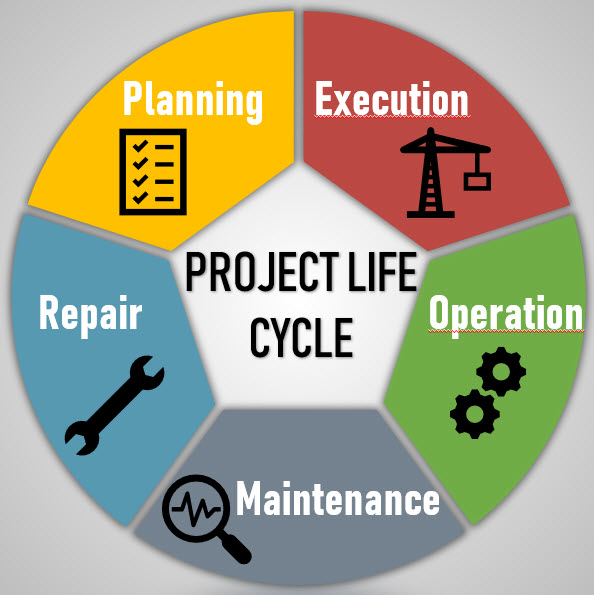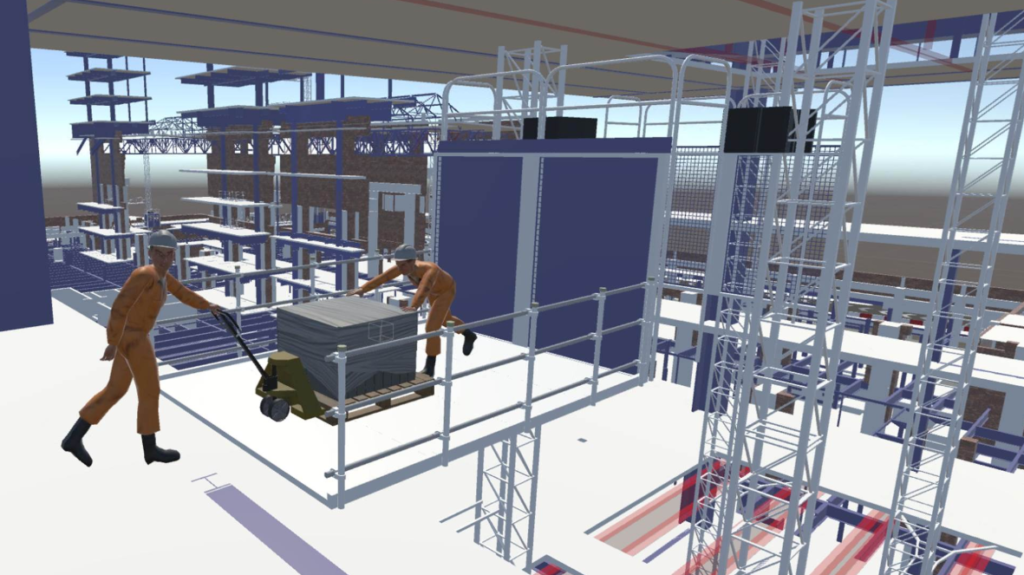In the first article ‘Everything you should know about the fundamentals of BIM Technology’ (link) we described the theoretical issues and fundamentals of BIM technology in construction. In this article we will focus on the answering questions: Why? Why did BIM revolutionize the construction industry? Why is this the path all companies will follow in the future? To answer these and other questions, we have prepared a list of the most frequent comments and questions from BIM-skeptics. We attempted to answer them in a simple way by presenting all the benefits of BIM technology use.
Or maybe these are BIM-skeptics who are right? Find out for yourself!
Benefits of applying BIM technology
- Early detection of a collision
- Faster design and construction
- More precise planning
- Visualization at an early stage of the project
- Higher quality of performed work
- Better communication in the project
- Reducing delays and errors
- Increasing efficiency and productivity
- Competitiveness
- Easy access to information
- Project life cycle
- Improvement of OSH (occupational safety and health)
Benefits of BIM technology
Benefit 1: Early detection of a collision
“Model is a model, and reality is a reality. Everything looks nice in a model, but it seems to fit merely apparently.“
BIM-sceptic
The model will never be 100% true to reality – you can model something perfectly, but the construction conditions will, of course, verify everything. However, using BIM still pays off! Even if you detect at least some of the mistakes in the model at an early stage, you will simply avoid them on the construction site. Because the BIM tools helps you automate the collision detection of elements such as electrical cables, sewer pipes or ventilation ducts. Simply put, you can turn on a ‘checker’ to automatically verify collisions and make report. This will save time instead of manually checking drawings from different industries, won’t it? Every discipline can link own models to one common where conflicts will be detected at an early stage where the cost of changes is much lower. It’s always better than standing in a two-meter excavation, in the rain, when lunch starts in five minutes, you haven’t checked your Facebook for an hour, and you just detected a sewer pipe going through a concrete wall.
Benefit 2: Faster design and construction
“I'll make drawings twice as fast as a 3D model!“
BIM-sceptik
Twice as fast it sounds tempting. But remember the times of blueprints? (or maybe you’re too young and you’ve always used CAD?) Most people at that time also thought that the new huge computers were too slow, too expensive and too complicated to operate. But times are changing and design geometries are getting more and more complicated. Architects and designers are competing in new ideas to make objects unique so that they are distinguished from the crowd.
At the same time, they want to make them faster and cheaper. Making 2D drawings may be faster than the model, but you won’t be able to make modifications so quickly. With a parametric design which becoming more popular in the industry, we are now able to make rapid changes to the model. Thanks to the accessible change of input data (spacing, width, length), the effects of modification are visible immediately after the relevant values are changed.
Will you make the drawings of such construction as below twice as fast? And what if the columns and supports change their position – how long will it take to modify the whole documentation?
Benefit 3: More precise planning
“Excel is my favorite program - I am an expert in it! Nothing replaces a spreadsheet.“
BIM-sceptic
ou can indeed do miracles in Excel. However, the BIM technology is not intended to replace a spreadsheet, but only to streamline and automate the collection of information from the model. Simply put, we replace tedious and often flawed manual work (e.g. “tapping” into tables of values) with automated data generation.
Here are some examples of how BIM technology supports us in our daily work:
-
Materials list - material types, quantities, volumes, surface area or lengths can be 'extracted' directly from the 3D model and exported, for instance, to the above-mentioned Excel. In case of modifications, the amount of reinforcement or concrete will be automatically updated, without tedious calculation with the calculator from the 2D drawing.
-
Cost estimation may be more clear and accurate - based on both a list of materials and additional information on the model, such as the assumed number of man-hours per element or the price of the material, with the automatic update of the costs when another material wiil be selected.Schedule - based on time and sequence of planned tasks - enables interactive connection with the model. In a graphical way, using appropriate colours, we may demonstrate on the model which construction elements are already planned, ordered, and which are already made.Plan of payment/expenses during the construction process - along with the schedule you may prepare a visualization and check the dependencies between the performed works and their costs.
Benefit 4: Visualization at an early stage of the project
“Visualizations are just fun for architects, not designers.“
BIM-scepticIt often happens that the investor/client does not have an engineering education and made drawings and sections are insufficient for them to imagine the design concept properly. What is more, even qualified employees often have problems with this issue. Creating a three-dimensional and multdiscipline model allows the easier presentation of the final result and placing the structure in the existing reality. Even the simplest 3D model enables a good-looking visualization, which in many cases may be the key to a better understanding of the project, which in turn may even decide who will win the contract. Foto source.
Benefit 5: Higher quality of performed work
“Oh Lord, I've been making reinforcement without a model for 30 years and I will still do it.“
BIM-scepticCongratulations! You may continue to do it for the next 30 years (unless your retirement comes earlier) and repeat the same mistakes. As the classic used to say: ,,Insanity is doing the same thing over and over again and expect different results.” But after all, how much can you get annoyed with designers, that the reinforcement does not fit on the construction site, although you can see everything on a piece of paper? Due to 3D models of reinforcement, we are able to avoid most of the collisions which are not visible on ordinary sections. It saves a lot of time on the construction site, because of the additional contact with the designer, who is usually in no hurry to answer questions. In addition, workers have access to the model and they are able to see the reinforcement scheme of e.g. a complicated connection and do not have to guess “what did the designer mean?”
Benefit 6: Better communication in the project
“E-mail and telephone are the best forms of communication in a team. Drawings are a great basis for discussion.“
BIM-scepticWhen asked: What do you think is the key to a successful implementation of the project?, the vast majority answers that the most significant thing is good cooperation among the project participants. The greater the project, the more its success depends on effective communication. It is tough to provide an ideal communication model which will ensure successful cooperation among investors, designers, construction managers and other industries. However, first of all, the reduction of the e-mail number, which we receive too many during the day and the number of tasks we do on the phone, which no one remembers after a few days, is the first step. The next step is to start using project management software, which may be combined with a 3D model such as JIRA. Instead of sending hundreds of messages – concerning different topics (in which it is easy to lose a thread) with copies to a lot of people (we will always skip someone anyway) – we have the ability to track individual tasks on one virtual board. These, in turn, relate to the specific elements in the model and their level of development, which are visible to individual participants. How many times have we had a situation when we waited for status from a person who is on vacation / sick leave and holding a mail only at his/her mailbox to which no one has access? And the project leader needs to be able to view or respond to it?
 SMaRT platform for connecting multidisciplines models combined with the JIRA - project management program.
SMaRT platform for connecting multidisciplines models combined with the JIRA - project management program.Benefit 7: Reducing delays and errors
“Drawings are always needed and will always be needed. Without drawings, you do nothing. A tablet on a construction site hasn’t got any sense!“
BIM-scepticThe reality is not such that every worker uses a tablet and helmet with MR (mixed reality) glasses on the construction site (not yet). However, thanks to BIM technology we are able to reduce the number of errors in creating drawings and misunderstandings on the construction site.
Nowadays, most design offices in Europe create 3D models of their constructions, but unfortunately, they still transfer them on paper as ‘paper approves anything’. As a result, there is a higher probability of errors. The obvious step is, therefore, to eliminate this transitional phase and use only the 3D model as the final product. A contractor with a reinforcement model is able to decide on his/her own orders by generating bending lists directly on the construction site independently from the designer. A good example is when on one of the projects the contractor got a reinforcement list with 40 pages with more than 200 tons of reinforcement and nothing was divided into specific elements. Foundations, walls and the rest of the system were collected in one document because it was easier for the designer to do so. As a result, the contractor had to look through tons of paper in order to find the right items.
Benefit 8: Increasing efficiency and productivity
“The productivity of the construction industry hasn't changed in the last 20 years and it won't change in the next 20.“
BIM-scepticThe first part of the sentence is true, but the second one is not necessarily true. The discontinuation of the implementig of new technologies has led to stagnation in the construction industry, whose productivity has only increased by 10% in the last twenty years! By comparison, the manufacturing industry has seen a nearly 70% increase in the same period (source: Transforming Infrastructure Performance by Infrastructure and Projects Authority, December 2017). Productivity increasing by automating tasks, introducing new technologies and expanding competence was the key to this achievement. We now have the opportunity to draw conclusions and learn from our “younger brother” how to keep up with the technological advances which drive the market and offer opportunities we would never have thought about before.
 Graphshowing the increase in productivity in various branches of the economy. (1997 = 100%). Source: Transforming Infrastructure Performance by Infrastructure and Projects Authority, Desember 2017
Graphshowing the increase in productivity in various branches of the economy. (1997 = 100%). Source: Transforming Infrastructure Performance by Infrastructure and Projects Authority, Desember 2017Benefit 9: Competitiveness
“The price of a project is the most important aspect!“
BIM-scepticFortunately, more and more investors realize that MMM’s approach, monay makes miracles does not always work. It is, therefore, encouraging that investors pay more attention to ‘soft criteria’ in contracts. It enhances the competitiveness of companies which are reliable, comply with labor law, health and safety regulations, quality, but are not necessarily the cheapest. For instance, in the Best Value Procurement (BVP) method, which is becoming more and more popular in Norway, there are five criteria, including the price criterion, which normally accounts for 25%. Other criteria include how the contractor plans to carry out the project (25%), risk assessment (15%), added value (10%) and the competence and experience of key people in personnel (25%). You may ask, and where is BIM? First of all, BIM at level three is in many cases a requirement in tenders, thus companies unable to guarantee the execution of the project in accordance with this technology will not be taken into account in the tender. Secondly, in the criterion of competence and experience of key personnel, additional points may be awarded for knowledge and experience in new technologies. BIM is therefore not the future. It is a process which already takes place on many projects and is constantly developing.
Benefit 10: Easy access to information
“I save everything only on disk C, and my desktop is my kingdom where I keep the documentation of the whole project.”
BIM-scepticDon’t be selfish! Remember about your colleagues and other industries. The times when projects are saved on local disk are coming to an end. On the market, there are more and more possibilities and solutions for data storage in a common space, so-called Common Data Environment (CDE link), popularly known as the cloud. Cloud is a virtual portable drive storing all the documentation, to which each authorized person has access. To be honest, the solution of creating such backups several times saved my project from losing important data, and me
from the anger of my boss. Furthermore, the cloud is a convenient solution allowing access to the project in almost every place on earth and from every possible device with internet access. Additionally, an increasing number of programs use the shared central mode function (e.g. Quadri), which allows many employees from different industries to work on one model at the same time – such a function is incredible in multidiscipline projects.
Benefit 11: Project life cycle
“I keep the as-built documentation in the archive in the basement. It is dry and safe there!“
BIM-scepticA typical scheme on the construction site – do your job, forget it and jump into the next project. But what happens with our part of the work after we do it? Usually, there’s no time to think about it and we’re not really interested in it. The designer is to design, the contractor is to perform, and the investor is to make final acceptance of the project. Here a small problem arises because the investor requires as-built documentation. The designer did his job and the contractor started to transfer the staff to the next object. During the execution, people who worked on it often switch and leave, which also causes a partial loss of knowledge about what and how something was done.
Therefore, storing and archiving project data is important and it would be ideal to do it during the implementation itself. Just like archiving itself, it is also essential to have easy access to it right after the project is completed. Properly recorded information in the 3D model regarding the material, location, date of execution or date of the next inspection, allow you to create a database. The database created in this way can support us both in the case of future expansion or renovation, as well as the maintenance of the object. Thanks to this, we may forget about checking the dates when, for example, carry out the next inspection of the elevator or replace the extinguisher – the information can be automatically sent to the appropriate recipient, e.g. in the form of an e-mail directly from the BIM model.
Benefit 12: Improvement of OSH
“BIM - what does it have to do with safety?“
BIM-scepticWhen it comes to OSH, fortunately, the days when you first built and then thought are over – after all, ‘it will be fine!’ Nowadays, it has become a standard for us to plan our tasks with safety in mind. It is not only essential to build, but also to build safely. How can BIM help in this regard? First of all, by making people think already during the design process, the model shows which works will be done at a height, where the railway line or high voltage cables are located. An experienced designer could say it is also possible to read the same from traditional drawings – however, it requires reviewing different types of documentation separately. In the model, it is possible to combine many disciplines and see what is in the neighbourhood (or underground) of the planned object.
n the executive phase BIM and OSH also go hand in hand. Before each potentially dangerous task, a risk and job safety analysis (JSA) is required. For example, a tower crane with a height of 100 m is supposed to be installed next to the railway traction. With the model, we are able to take the participants on a virtual journey which allows them to be involved, and above all understand and minimize possible dangers, better than sketches on paper. Foto source
Benefits of BIM technology - Summary
To summarize, we hope that by presenting the benefits of BIM technology, we have convinced even the greatest BIM-skeptics to implement it. Every participant of the construction process – investor, designer, architect, contractor or supplier – will find something for themselves. The above mentioned benefits of BIM have been gathered based on dozens of construction and infrastructure projects, which we deal with in our everyday work. In the vast majority of cases, these projects proved to be successful and brought the expected results.
We are aware that we only mention the advantages and benefits here, and do not mention any disadvantages or problems arising from the application of BIM technology. Don’t worry! We have planned a separate article for this purpose describing the difficulties and challenges related to the implementation and application of the technology, we have encountered in previous years.
Did you like that post ? Share it with others !
We spend a lot of time and effort creating all of our articles and guides. It would be great if you could take a moment to share this post !
Share:
Comments:
Author:

Download BIM CASE STUDIES:
After reading this guide you will learn:
- How BIM is used on the biggest projects in Norway
- What were the challenges for the design team and how were they solved
- What were the challenges on the construction site and what was our approach to them

Newest articles:
















Thank you for sharing this useful information Such an excellent post!
5D BIM
Thank you! We are really glad that you liked it.
[…] More precise planning […]